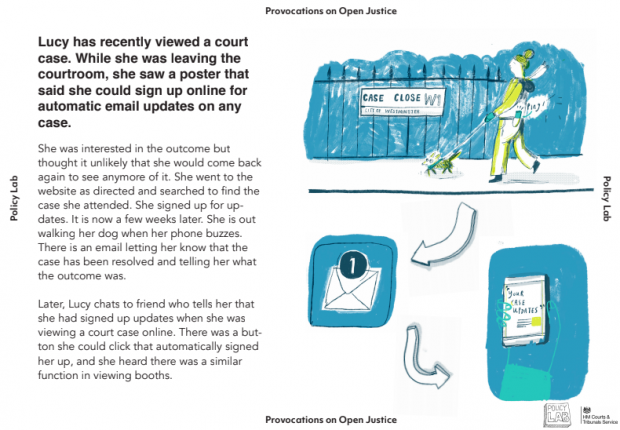UK Policy Lab: “Open justice is the principle that ‘justice should not only be done, but should manifestly and undoubtedly be seen to be done’(1). It is a very well established principle within our justice system, however new digital tools and approaches are creating new opportunities and potential challenges which necessitate significant rethinking on how open justice is delivered.
In this context, HM Courts & Tribunal Service (HMCTS) wanted to consider how the principle of open justice should be delivered in the future. As well as seeking input from those who most commonly work with courtrooms, like judges, court staff and legal professionals, they also wanted to explore a range of public views. HMCTS asked us to create a methodology which could spark a wide-ranging conversation about open justice, collecting diverse and divergent perspectives….
We approached this challenge by using speculative design to explore possible and desirable futures with citizens. In this blog we will share what we did (including how you can re-use our materials and approach), what we’ve learned, and what we’ll be experimenting with from here.
What we did
We ran 4 groups of 10 to 12 participants each. We spent the first 30 minutes discussing what participants understood and thought about Open Justice in the present. We spent the next 90 minutes using provocations to immerse them in a range of fictional futures, in which the justice system is accessed through a range of digital platforms.
The provocations were designed to:
- engage even those with no prior interest, experience or knowledge of Open Justice
- be reusable
- not look like ‘finished’ government policy – we wanted to find out more about desirable outcomes
- as far as possible, provoke discussion without leading

Using provocations to help participants think about the future allowed us to distill common principles which HMCTS can use when designing specific delivery mechanisms.
We hope the conversation can continue. HMCTS have published the provocations on their website. We encourage people to reuse them, or to use them to create their own….(More)”.